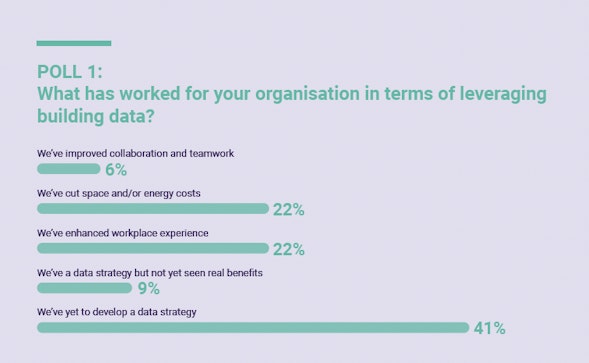Why are firms still struggling to leverage building data?
The benefits of using data to improve the performance of office buildings and enhance experience are widely recognised. So what stops companies getting their act together?
There is untapped potential for companies to use building data to optimise their office space, according to a new report from technology company Zapfloor.
This explains how collecting and analysing data from a variety of sources, including sensors, energy meters, occupancy trackers and more, will create opportunities to improve the overall performance of your facility. However, many organisations have yet to develop a data strategy for their buildings.
The Zapfloor ebook discusses the poll results of a recent webinar produced in partnership with WORKTECH Academy, entitled ‘Unlocking the potential of your space’. Benefits of leveraging building data included an enhanced workplace experience (22 per cent), reduced space and energy costs (22 per cent) and improved collaboration and teamwork 6 per cent). But 41 percent of those firms polled do not yet have a data strategy in place.

Barriers to investment
What stops companies investing in data technologies? According to the Zapfloor report, the biggest barrier is the complexity of the hybrid work environment which hinders decision making, closely followed by not being convinced of the business case. Further factors include economic instability, which is reducing budgets, and the pace of technological change, which makes it a struggle to say abreast of evolving developments.
For those companies engaging with data analytics, however, the priority is clear: 62 per cent want the ability to make evidence-based changes to their workspace design, says the Zapfloor paper. Companies also want to use data to better understand culture, reduce costs and become more sustainable.
The Zapfloor ebook, which also discusses the links between data analytics and social sciences, and designing people-centric workspaces, can be accessed here.








